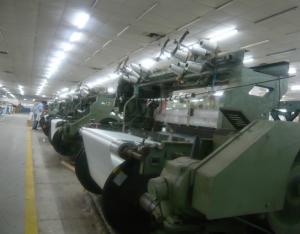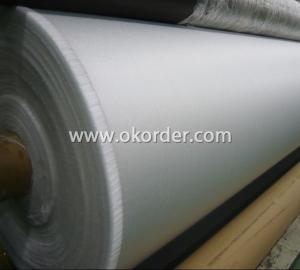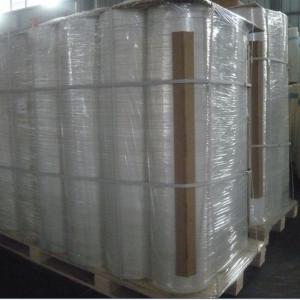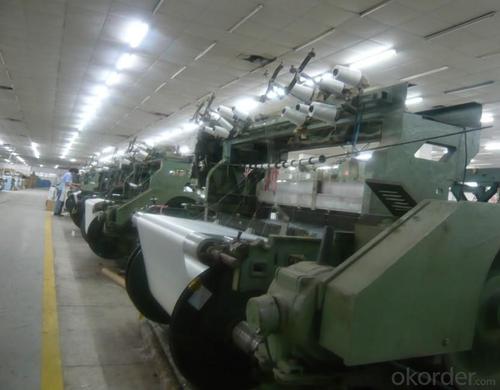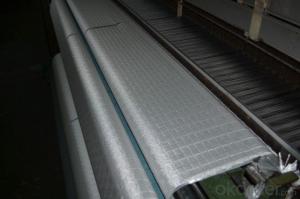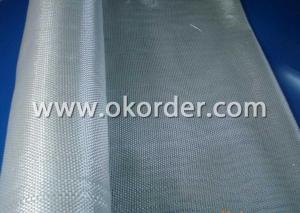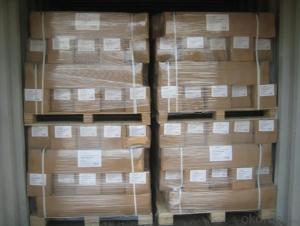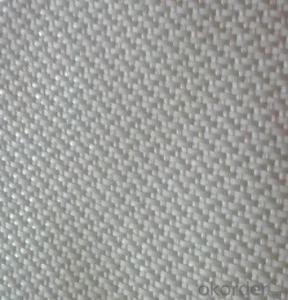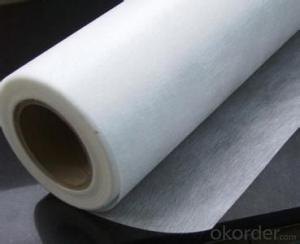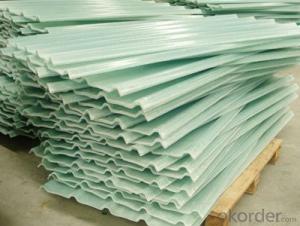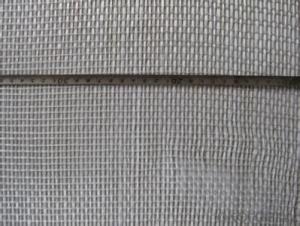Fiberglass Fabrics - High Quality 200g
- Loading Port:
- Shanghai Port
- Payment Terms:
- TT or LC
- Min Order Qty:
- 10000 M2 m²
- Supply Capability:
- 50000000 M2 Per Year m²/month
OKorder Service Pledge
OKorder Financial Service
You Might Also Like
Introduction of High Quality Fiberglass Fabrics 200g:
Fiberglass fabric is weaved of high quality C-glass fibers or E-glass fibers. It is a good construction material with the following excellent properties:
* Dimensional stability
* High Strength
* Fire resistance, High heat resistance
* Good chemical resistance
* Durability
* Forms around complex surface shapes
Application of High Quality Fiberglass Fabrics: 200g
Fiberglass fabrics can be used in a variety of applications, including construction in waterproofing applications for roofing and foundation, wall treatment, pipeline joint wrap.
Package of High Quality Fiberglass Fabrics 200g:
Fiberglass fabric is wound on a paper tube with inner diameters of 50. 8, 76 or 152mm. Each roll is wrapped in a plastic bag, then to be packed in a carton box. The rolls are to be horizontally placed.
Width (cm): 90, 100, 127
Length (m): 100, 200, 300, 400
Storage of High Quality Fiberglass Fabrics 200g:
Store rolls in a cool, dry location.
Protect rolls from weather and other damage.
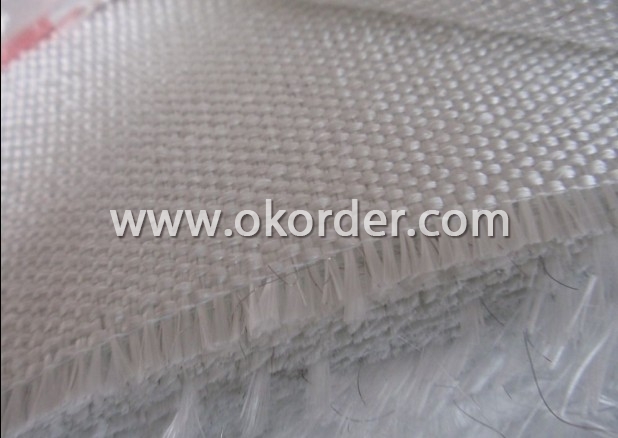
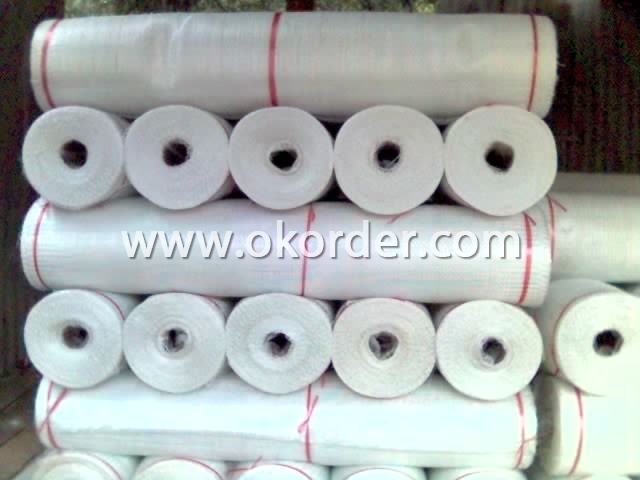
- Q: How is fiberglass fabric used in the production of insulation jackets?
- Fiberglass fabric plays a crucial role in the production of insulation jackets. It is widely used as an outer layer material due to its exceptional thermal resistance, durability, and fire-retardant properties. Insulation jackets are designed to provide thermal insulation and protect various industrial equipment, pipelines, and machinery from extreme temperatures, moisture, and other environmental factors. When manufacturing insulation jackets, fiberglass fabric is typically employed as the outermost layer. This fabric is made from fine strands of glass that are woven together to form a strong and flexible textile. The structure of fiberglass fabric allows it to trap air between the fibers, creating a layer of insulation that helps to regulate temperature and prevent heat loss or gain. The fiberglass fabric used in insulation jackets is usually coated with a protective layer, such as silicone or acrylic, to enhance its resistance to chemicals, abrasion, and weathering. This coating also improves the fabric's ability to repel moisture, preventing condensation and potential damage to the insulation material. Insulation jackets made with fiberglass fabric offer several advantages. Firstly, fiberglass fabric is highly resistant to high temperatures, making it suitable for applications where insulation is required in hot environments. It can withstand temperatures ranging from -200°C to 540°C (-328°F to 1004°F), ensuring long-lasting protection for the equipment it covers. Secondly, fiberglass fabric is lightweight and flexible, allowing for easy installation and removal of the insulation jackets. Its flexibility enables it to conform to the shape of the equipment, ensuring a snug fit and optimal insulation performance. Furthermore, fiberglass fabric is known for its excellent fire resistance properties. It is inherently non-combustible and does not contribute to the spread of flames, making it a safe material to use in industrial settings. In summary, fiberglass fabric is a vital component in the production of insulation jackets. Its thermal resistance, durability, fire-retardant properties, and ability to repel moisture make it an ideal material for protecting industrial equipment from extreme temperatures and environmental factors.
- Q: Two, fat and PVC paste resin paste into the sizing, coated on glass fiber cloth, so that after baking, how do not shrink?
- Do not grind finer, the particles are too small at room temperature, often because of excessive solvent and paste viscosity high.
- Q: Can fiberglass fabric be used for making insulation gaskets?
- Indeed, insulation gaskets can be crafted using fiberglass fabric. Renowned for its remarkable thermal insulation qualities, fiberglass fabric is widely utilized in diverse thermal insulation applications. Its capacity to resist high temperatures and conduct heat at a low rate render it an optimal substance for producing gaskets that adeptly seal and insulate against heat transfer. Furthermore, fiberglass fabric exhibits durability, lightweightness, and flexibility, thereby facilitating its handling and enabling its compatibility with various gasket designs. Its chemical resistance and commendable electrical insulation properties further bolster its appropriateness for insulation gaskets.
- Q: Can fiberglass fabric be used for making gloves?
- Yes, fiberglass fabric can be used for making gloves.
- Q: Which is more durable, stone cotton or glass cloth?
- Asbestos is a specialized mineral that can be obtained by processing. Glass fiber is usually fused with quartz and alkali. The more alkali is added, the worse the performance is. Many processes require alkali free fiberglass.If you want to talk, open another question
- Q: What are the different widths of fiberglass fabric available?
- Fiberglass fabric is available in a variety of widths to suit different applications and project requirements. The most common widths of fiberglass fabric range from 1 inch to 60 inches. However, it is important to note that specific suppliers or manufacturers may offer different widths based on their production capabilities and customer demands. Additionally, custom widths can often be accommodated upon request. It is recommended to consult with a supplier or manufacturer directly to determine the specific widths available for fiberglass fabric.
- Q: Can fiberglass fabric be used for insulation in homes?
- Yes, fiberglass fabric can be used for insulation in homes. Fiberglass fabric is commonly used as an insulation material due to its excellent thermal properties. It is highly effective in trapping and retaining heat, making it an ideal choice for insulating homes. Fiberglass fabric is also lightweight, flexible, and easy to install, making it a practical option for various insulation applications. Additionally, fiberglass fabric is non-combustible and resistant to moisture, which enhances its durability and suitability for use in homes. Overall, fiberglass fabric is a popular and reliable insulation material used in many residential buildings.
- Q: What type of thread is used for sewing fiberglass fabric?
- Polyester thread, referred to as the commonly used thread for sewing fiberglass fabric, is specifically engineered to possess strength and durability. This makes it well-suited for stitching heavy and resilient materials such as fiberglass. With its elevated tensile strength, it effectively withstands abrasion, a crucial quality when handling stiff and abrasive fiberglass fabric. Moreover, polyester thread exhibits resistance to both UV rays and chemicals, rendering it perfect for outdoor and industrial applications that frequently involve fiberglass fabric.
- Q: How does fiberglass fabric perform in flexural strength?
- The excellent flexural strength properties of fiberglass fabric are well-known. This term refers to a material's ability to withstand bending or flexing without breaking or deforming. Fiberglass fabric, created by weaving fine glass fibers together, demonstrates high flexural strength due to the inherent properties of glass. The glass fibers offer exceptional rigidity and resistance to bending forces, resulting in a highly durable fabric that can endure significant flexing loads. The structure of fiberglass fabric allows for the even distribution of applied loads across its surface. This minimizes stress concentration points and prevents localized failure, enabling the material to maintain its shape and integrity even when subjected to substantial bending or flexing conditions. Furthermore, the manufacturing process of fiberglass fabric allows for tailoring the orientation and arrangement of the glass fibers, thus enhancing its flexural strength. By strategically aligning the fibers, the fabric can exhibit even greater resistance to bending forces in specific directions. Additionally, fiberglass fabric is often combined with resins or coatings to create composite materials, further enhancing its flexural strength. The resin matrix serves as a binder, offering additional support and stability to the glass fibers and improving the overall performance of the fabric. Overall, fiberglass fabric is highly regarded for its outstanding flexural strength, making it the preferred choice for applications that demand high durability and resistance to bending or flexing forces.
- Q: Can fiberglass fabric be used for insulation in renewable energy projects?
- Insulation in renewable energy projects can utilize fiberglass fabric. This fabric is commonly used for thermal insulation in a variety of applications, including renewable energy projects. Its excellent insulating properties and high thermal resistance make it suitable for insulating components like pipes, ducts, and equipment in solar, wind, geothermal, and other renewable energy systems. Fiberglass fabric is famous for its ability to prevent heat transfer effectively due to its low thermal conductivity. This is crucial in renewable energy projects where minimizing heat loss or gain is vital for optimal system performance and energy efficiency. By employing fiberglass fabric insulation, the energy generated from renewable sources can be efficiently utilized without being wasted due to inefficient insulation. Moreover, fiberglass fabric is lightweight, flexible, and easy to handle, making it appropriate for various installation requirements. It can be easily cut, shaped, and wrapped around different components, ensuring a proper fit and efficient insulation coverage. In addition to its exceptional thermal properties, fiberglass fabric insulation also offers other advantages. It is non-combustible, meaning it does not burn or contribute to the spread of fire. This is particularly important in renewable energy projects where safety is of utmost importance. Additionally, fiberglass fabric is resistant to moisture, chemicals, and UV radiation, guaranteeing long-lasting insulation performance even in harsh environmental conditions. All in all, fiberglass fabric is a versatile and dependable choice for insulation in renewable energy projects. Its thermal resistance, ease of installation, and durability make it an ideal solution to maximize energy efficiency and ensure the smooth operation of renewable energy systems.
Send your message to us
Fiberglass Fabrics - High Quality 200g
- Loading Port:
- Shanghai Port
- Payment Terms:
- TT or LC
- Min Order Qty:
- 10000 M2 m²
- Supply Capability:
- 50000000 M2 Per Year m²/month
OKorder Service Pledge
OKorder Financial Service
Similar products
Hot products
Hot Searches
Related keywords
